| |
|
|
| |
Mira Mar Veterinary Hospital
|
|
| |
|
|
| |
|
|
| |
|
|
|
|

|
| |
Happy New Year from Mira Mar Vets!
|
|
| |
|
|
| |
We would like to wish our clients and their pets a happy and healthy 2023. We hope that the festive season was kind, and that everyone (both two legged and four legged) behaved themselves!
Welcome to our first newsletter of the year, with some important clinic news, as well as lots of tips on how to help the more anxious members of our pet families.
We hope you enjoy it! |
|
|
|

|
| |
A new year and a BIG change
|
|
| |
|
|
| |
At the changeover of the new year, we also saw some significant changes within the structure of Mira Mar Vets.
After 15 years as a partner in the business, Dr Dave has decided it is time to leave the clinic as an owner. We wish to take this opportunity to thank Dave for the many years of heart and soul he has put into the clinic, not just as a fantastic and compassionate vet, but as a work colleague, boss and friend. We will miss having him around! But don't worry, Dave is taking a few months of leave, and then we hope to see him back here as a locum employee in the future.
And in thrilling news for us all, the new partner in the business will be none other than existing experienced veterinarian, Dr Sara! We look forward to many more years of continued fine veterinary care of your pets with Dr Jim and Dr Sara at the helm, and welcome the exciting opportunities that this new partnership will bring. |
|
|
|
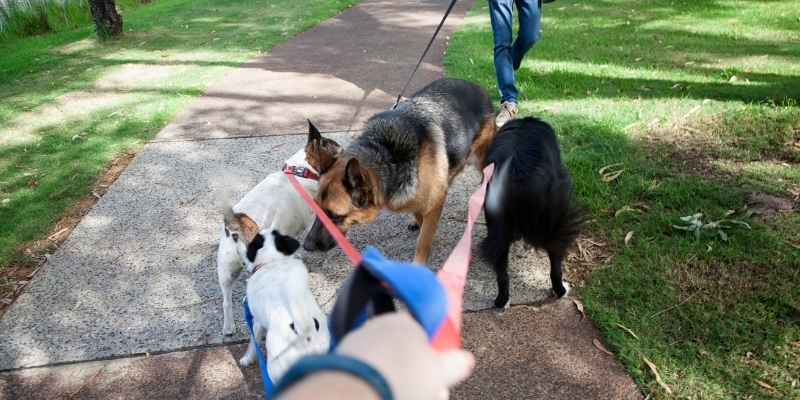
|
| |
Four tips for socialising your pup
|
|
| |
|
|
| |
If you’re expecting the pitter-patter of puppy paws in your household, we recommend that you start thinking about early socialisation opportunities for your little bundle of fluff!
Socialisation involves getting puppies used to a variety of people, animals, places or experiences that they are likely to encounter in their adult life. The most important socialisation times for puppies are between 3-14 weeks old, meaning that owners have a relatively short period to get the best out of this critical period.
Here are four tips for a well-socialised pup:
- If you will be purchasing your pup from a breeder, pick a breeder who has raised the pups in a home environment. Whilst the pups won’t have been taken out and about much (due to incomplete vaccination protection), they should be reasonably confident with handling and common household noises.
- Handle your pup daily in a gentle manner, rewarding calm behaviour with lots of treats. This should include holding, patting and “examining” them by looking at their ears, handling their paws, opening their mouth, looking under their tail, etc.
- Introduce your pup to a variety of people, including males and females of various ages (including children). Even before your pup is fully vaccinated, you can carry them around new environments, and take them to low-risk situations such as a well-run puppy preschool for safe play interactions with other pups and people.
- Never force your puppy if they are fearful during these new experiences - remember, the aim is for your pup to learn that new experiences are safe! Allow your pup to watch at a distance for a while if they are unsure, and keep things positive with lots of treats.
If your pup is socialised gently and positively, they are much more likely to grow into an adult dog who is confident and friendly in novel situations, rather than reacting fearfully.
For more information on the safe socialisation of puppies, including vaccination protection recommendations, ask our knowledgeable team.
|
|
|
|
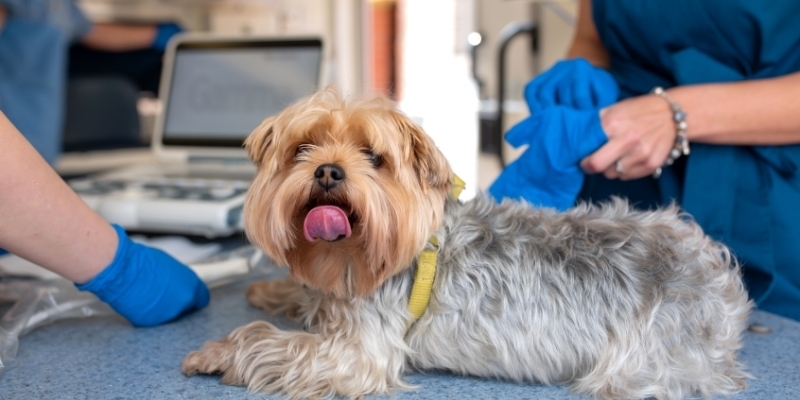
|
| |
Anxiety at the veterinary clinic
|
|
| |
|
|
| |
Unfortunately, some dogs may become anxious when they visit the veterinary clinic. This can stem from a previous intense experience (e.g. where an injured pet required a very painful area to be examined), or may be related to generalised anxiety about unfamiliar places.
How can I tell if my dog is anxious at the clinic?
An anxious pet may manifest in several ways, based on the fight, flight or freeze responses:
- Fight: the pet may put on a defensive front to keep veterinary staff away, barking or growling when approached and even snapping or lunging to bite if they feel highly threatened
- Flight: the pet may try to hide, or will run or jump away when approached
- Freeze: the pet’s body posture will be stiff and still with a tense facial expression, and they will possibly “whale eye” (where they face away but still try to watch for the vet’s approach)
It’s important to bear in mind that any anxious dog may progress to aggressive behaviours (such as snapping) if it is pushed too far out of its comfort zone.
How can we help anxious patients to feel better about their visits?
Commonly, anxiety at the veterinary clinic is best addressed with both short-term and long-term measures.
Short-term measures to facilitate necessary veterinary treatment involve the use of calming sedative medications which can be administered by mouth at home, and/or by injection at the veterinary clinic (often with the owner present to help reassure their pet, provided it is safe for them to do so).
Long-term measures involve behavioural modification techniques to address any underlying anxiety and help reduce the pet’s fear response. In certain cases, some pets may require long-term anti-anxiety medications.
If your pet is very anxious about their veterinary visits, have a chat with our team about how we can help. We would love for all of our patients to be as happy to see us as we are to see them!
|
|
|
|
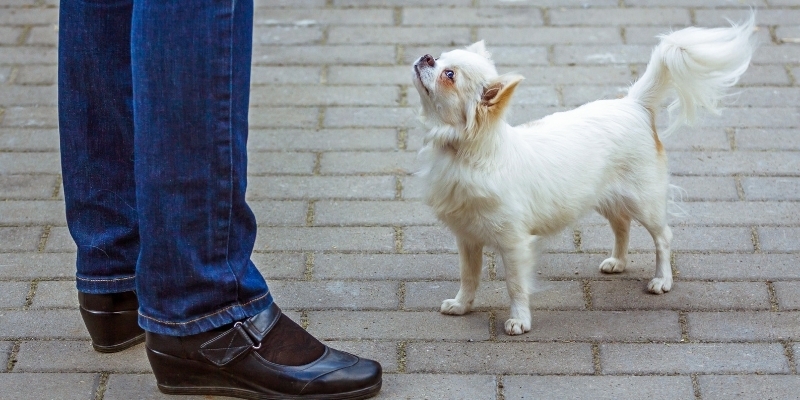
|
| |
Small dog syndrome
|
|
| |
|
|
| |
It’s not uncommon to hear jokes about “small dog syndrome”, but is it actually a thing?
We have many gorgeous small-breed canine patients who are sociable, amenable, and friendly to all. However, we do also see a reasonable number of small dogs who try to rule the roost at home or in the veterinary clinic!
Here are a few reasons why some little dogs may end up being a little too big for their (tiny) boots:
Individual personalities
Just like people, dogs have their own individual personalities and quirks. However, certain breeds tend to demonstrate a tendency towards particular behavioural characteristics.
It’s no surprise that many small dogs tend to be disproportionately courageous, determined (even stubborn) and vocal, given the purposes they were originally bred for. For instance, Jack Russell terriers were bred to flush out foxes from hiding with determined barking, and then give chase – no wonder they’re generally not shy about verbal communication!
Poor socialisation
Poor socialisation stems from a lack of positive exposure to new people, animals and situations, particularly during key development periods. A dog who was poorly socialised as a pup is more likely to show anxious, overexcited or unfriendly tendencies when approached by unfamiliar people or pets. This may manifest as reactive behaviours such as excessive barking, growling, snapping or even lunging.
Unfortunately, small-breed puppies are not always given the same socialisation opportunities as larger breeds. This may be because:
- Some owners of small dogs do not commit to as much obedience training, as they see negative behaviours in a small-sized dog as less of a problem
- Some small dogs are kept as lap-dog companions and given less opportunity for normal play and socialisation
If your little dog is showing any problematic “small dog syndrome” tendencies, book a consultation with our knowledgeable vets. Once we diagnose the underlying motivation for their behaviour, we can offer positive solutions to help get the best out of your spirited little canine!
|
|
|
|
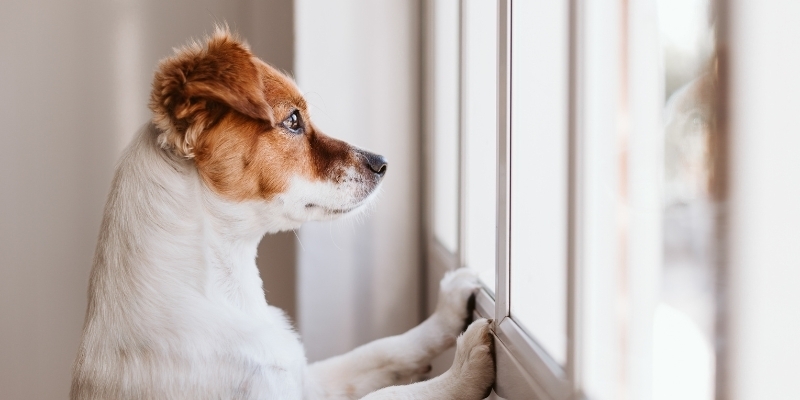
|
| |
Please, don’t go! Dogs with separation anxiety
|
|
| |
|
|
| |
Have you heard of separation anxiety in dogs? This is a behavioural condition where a dog experiences abnormal levels of distress when a person or animal to whom they are highly-attached is absent.
As well as being unpleasant for the dog in question, separation anxiety is understandably often upsetting for their owners too. These owners may be forced to change their lifestyle to accommodate their pet’s special behavioural needs, and often feel quite stressed when forced to leave their pet for necessary reasons.
How can I tell if my dog has separation anxiety?
Dogs with separation anxiety will demonstrate varying symptoms of distress when left alone. These can include:
- Destructive behaviours (e.g. clawing or chewing at doors, walls or crates)
- Barking, whining or howling
- Physical symptoms of anxiety, such as excessive drooling or shaking
- House-soiling
- Pacing around
- Escaping
Unfortunately, these kinds of behaviours can result in the destruction of property and self-induced injuries to the pet.
What should I do if I suspect separation anxiety in my pet?
If you suspect separation anxiety in your pet, the best course of action is to book a behavioural consultation with one of our knowledgeable vets. A thorough check-over (which may also include blood and urine tests) and a detailed discussion of your pet’s symptoms are important for ruling out other potential causes of similar behaviours - for instance, old dog ‘senility’, chronic pain or urinary tract diseases.
If we confirm a diagnosis of separation anxiety, we can then make a treatment plan for helping your pet. Depending on the severity of their symptoms, this plan may include:
- Behavioural modification techniques such as avoiding triggers in the short-term, setting up a program of environmental enrichment, and modifying your pet’s response to your departures through positive re-training techniques
- Short- or long-term anti-anxiety medications to alleviate your pet’s distress
The good news is that with the correct treatment (and some dedicated work on your part), most cases of separation anxiety can be cured or substantially improved!
|
|
|
|
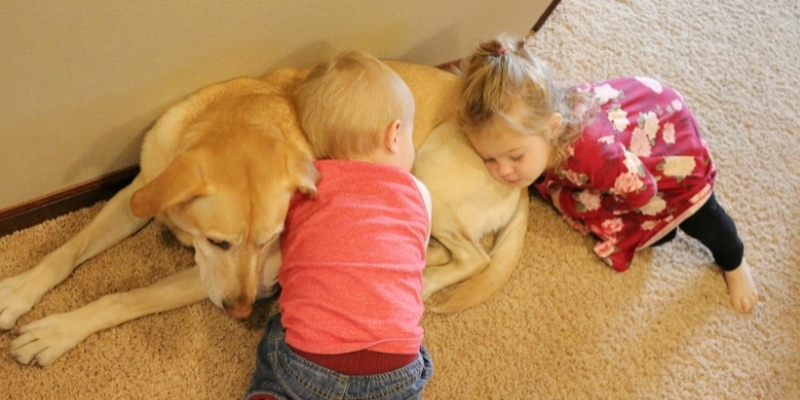
|
| |
Safety for all small family members
|
|
| |
|
|
| |
Whilst many kids and family pets are best buddies (and adorably so!), positive and safe interactions between children and dogs should never be taken for granted! Unfortunately, dog bites do happen, and most often children are bitten by a dog they already know.
Why are kids at greater risk of dog bites?
Children tend to be more at risk of dog bites (even from usually friendly pets) because:
- They are too young (or haven’t been taught) to read dog body language
- They tend to move quickly and make unpredictable loud noises that can startle animals
- They are curious, haven’t yet learnt to be gentle and are more likely to accidentally step on or fall on a pet, or physically interact in a way the dog finds distressing (i.e. by pulling the dog's ears, or poking their fingers into the dog’s eyes, nose or mouth)
Remember, ANY dog can bite if they feel threatened.
How can we help keep kids AND pets safe and happy?
- Supervise all interactions between dogs and kids, and prevent children from grabbing or playing with pets roughly, climbing on top of pets, cornering pets or approaching pets who are eating or resting
- When dogs and young children can’t be fully supervised, physically separate them (e.g. with baby gates)
- Monitor pet body language for early signs of discomfort – these include the dog yawning, lip licking, turning their head away, “freezing” or leaning away from the child – if these signs are demonstrated, calmly end the interaction
- Teach young family members how to recognise when a dog is feeling uncomfortable and needs space
- Encourage positive interactions, such as supervised games of fetch or obedience training sessions (with treats)
- Help your dog to become the calmest and friendliest canine citizen through early socialisation, positive-method obedience training and regular exercise
- Support your dog by allowing them to retreat to “safe” dog-only areas (such as a comfortable crate or bedroom) if they need space
- Have them assessed by one of our veterinarians if you suspect any anxiety or physical ailments that could be causing them discomfort
With some adult guidance, children and dogs can become the best of friends!
|
|
|
|
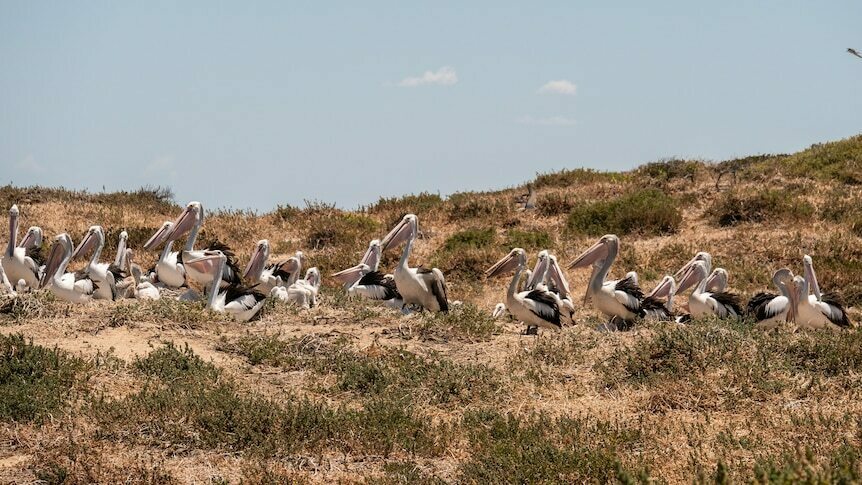
|
| |
Plethora of polluting pelicans disrupt ecology on Penguin Island
|
|
| |
|
|
| |
Over the past 20 years, Penguin Island near Shoalwater in Western Australia, has been home to more than just penguins, and would be more aptly named ‘Pelican Island’. The ever-growing population of pelican colonies has all but overtaken the small island, disrupting its fragile ecological balance as the invaders take to scavenging rubbish tips and leftover fishing debris for food leaving a glittering trail of destruction in their wake.
“Birds that feed on the rubbish tips and return to Penguin Island come back with entire shopping bags full of domestic rubbish, which then gets ground up in their gizzard and then burped out as a regurgitated pellet, which is just full of fragments of glass and plastic," said Dr Nic Dunlop, coordinator of citizen science at the Conservation Council of Western Australia.
"That was one colony, with maybe 50-to-100 pairs, now there are six colonies and we're probably up with somewhere between 500 and 1,000 pelicans at the moment, but they breed all year round as well."
Generating possible solutions to the overpopulation problem, including discouraging the pelicans from nesting in certain areas without, crucially, causing them any harm, requires some creative thinking.
"I've been thinking about those spring-loaded posts that you get along the edge of the road," Dr Dunlop said. "If a pelican hit them, it wouldn't hurt them, but they don't like nesting when there's lots of obstructions, so you could possibly put up an array of posts that would keep them out of certain areas long enough for the vegetation to regenerate,” said Dr Dunlop.
Learn more about how conservationists are working to manage Penguin Island’s booming pelican population on the ABC News website. |
|
|
|
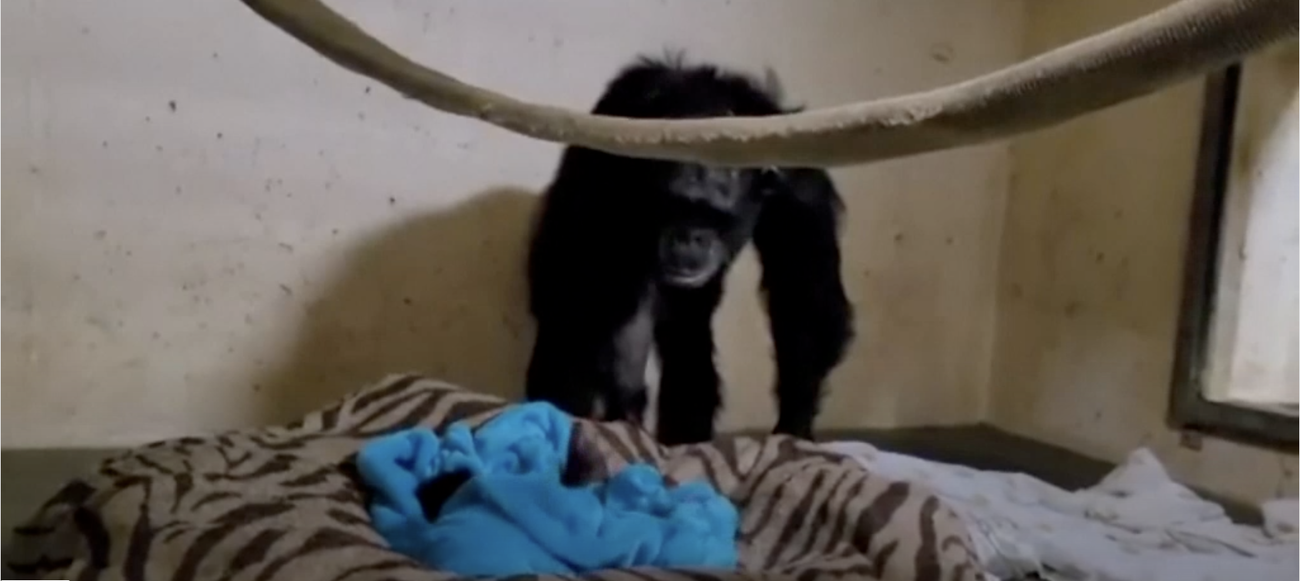
|
| |
Animal News In Brief
|
|
| |
|
|
| |
Chimpanzee’s emotional reunion with her baby caught on camera
An emotional mother chimpanzee's embrace with her newborn baby was caught on camera at the Sedgwick County zoo in Wichita, USA - and it's a squeeze for the ages! Baby Kucheza was born at the zoo via a caesarean-section operation, however, after showing signs of breathing difficulties, Kucheza needed to be separated from his mother, Mahale, to receive necessary medical attention. Mahale's emotional reunion with her bouncing baby boy is a moving testament to the power of love between mothers and their babies, a trait shared by all species.
"You can see in the video straight away as soon as she realises that her infant is there she’s straight to it, she embraces it, and the nature of that embrace is so similar to what a human mother would do when she’s reunited with her child," said Natasha Coutts, a chimp expert from the Jane Goodall Institute Australia.
So, forget about bear hugs: if you want to give the cosiest cuddle to your loved one, bring 'em in for a great big ‘chimp hug!’
Read more about Mahale and Baby Kucheza’s reunion on the ABC News website.
I’ll be home for Christmas… in 12 years’ time!
A Christmas miracle came true over the holidays, when a cat who disappeared a whopping 12 years ago, was delivered safely back to their Craigieburn home. Nicole Rizzo and her five children were delighted to be reunited with Simba, who they presumed to be long gone when he never returned home in 2010.
“The kids love it. They don’t remember him, but they know the story” said Ms Rizzo. Before Simba’s disappearance back in 2010, his veterinarian had warned Nicole that due to his unusual and attractive peachy coat, Simba could become the victim of a cat-napping.
“He was in pretty good nick, and he’s not a feral cat, he’s still quite trained, so they think he was obviously with another family. [He was found] in the same area where he went missing, so he was probably just around the corner from home, who knows.”
While his true location for the past decade or so remains a mystery, Simba recently found his way into the care of a local shelter, and from there animal services tracked Nicole down using the information provided on his microchip. “He’s quite a bit unsure with our family, because we have another cat, and quite a few kids,” said Ms Rizzo, “but he’s getting there, he’s getting there.”
Read more about Simba’s remarkable reappearance on the ABC News website.
Pups in Prison program gives women inmates a chance to serve the community
The Southern Queensland Correctional Facility offers a unique program that allows female inmates to learn employable skills and help the community by training puppies to become assistance dogs. Once fully trained, the dogs will go on to help meet the increasing demand for service animals to support people living with disabilities, autism and post-traumatic stress disorder.
The program places trainee puppies with an inmate responsible for their care 24 hours a day. Service-dog-in-training, 'Ellie', is currently paired with Mary*, who says the opportunity to participate in the program has changed her life.
“I’ve gained more knowledge and a Certificate III in animal companionship. I don't know how to say it… [I've learned] I can now do anything if I put my mind to it. Words couldn’t explain the emotional aspect that goes behind this. It makes me so proud that we've done this, and it makes someone's life just a little bit easier.”
Senior assistance dog trainer Jane Kefford and prison senior services coordinator James Osbourne supervise the Pups in Prison program. Both agree that the program has merits for the wider community, and the inmates themselves.
“They get the opportunity to work in a job that can give them a qualification when they go out into the community,” said Ms Kefford.
Mr Osbourne adds: “I’ve seen a number of women over the years build respect they didn't have when they came into the jail and it's been fantastic to work with them and see them come out of their shell and give back to the community.”
(Mary's name has been changed to protect her privacy in accordance with the Queensland Correctional Services Act)
Read more about the Pups in Prison program on the ABC News website. |
|
|
|
| |
This email contains comments of a general nature only and is not intended to be a substitute for professional veterinary advice. It should not be relied on as the basis for whether you do or don't do anything.
All content © PetPack 2022 |
|
|
|
[Footer]
|